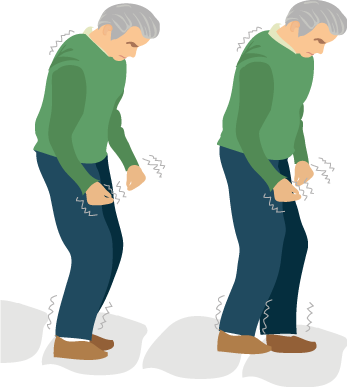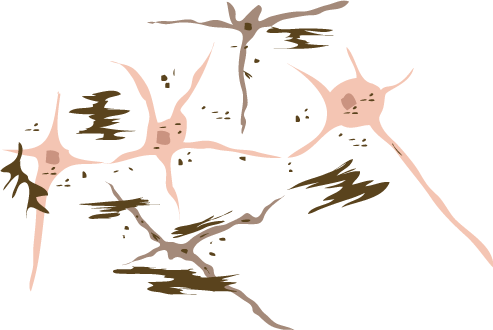This post is also available in Dutch.
The chances of you knowing someone with Parkinson’s are constantly growing. We’re getting older, and not without its setbacks. So how does this disease work, and what do we know?

Parkinson’s Patient. Image by Annelies (CC BY-NC-ND 4.0).
Parkinson’s is a degenerative disease. This means that symptoms of Parkinson’s increase over time. Patients have more and more trouble with moving. For instance, when walking steps begin to resemble an arduous shuffle, the spine begins to bend forward, and in some cases the hands begin to tremble.
Inside the brains of Parkinson’s patients, dopamine-producing cells are slowly dying. Dopamine is a neurotransmitter that is important for beginning a movement. There are a few small areas where dopamine is produced and distributed, and the largest is the substantia nigra.
What do the basal ganglia do?
To understand what the substantia nigra does, one needs to understand what the basal ganglia do. The basal ganglia are a group of areas in the brain that regulate the transmission of all kinds of information. They also regulate and transmit the brain signals necessary for making movement.
The communication within your brain can be noisy. The aim of the basal ganglia is to separate important brain signals from noise. If your basal ganglia would allow too much information to be transmitted, this would result in you constantly making uncontrollable movements, or to shout out everything all at once (as in Tourette’s). On the other hand, the way that the basal ganglia work shouldn’t be too controlled either, because if you really want to make a particular movement, then the basal ganglia shouldn’t hold you back.
What does the substantia nigra do?
The substantia nigra regulates the basal ganglia, and does so with the help of the neurotransmitter dopamine.
If your substantia nigra is not working properly, then the basal ganglia will over filter your movement impulses. As a result, the signal to begin a movement will need to be amplified in order to surpass the basal ganglia. This in turn causes the slow and difficult movements as seen in Parkinson’s. However, in Parkinson’s, it is not that the muscles cannot move—the problem is inside the brain. The brain struggles because dopamine-producing neurons in the substantia nigra are dying off.

Dying Dopamine Neurons. Image by Annelies (CC BY-NC-ND 4.0).
Why dopamine cells?
We don’t quite know yet what’s going wrong in the substantia nigra in Parkinson’s, but we do know that it has something to do with a specific protein. This protein, the so-called alpha synuclein, is produced more in dopamine-producing cells within the substantia nigra than in other cells, and this is the starting point where most problems seem to arise.
Imagine that the brain is one large protein factory with a long conveyer belt. During a particular phase of production something goes wrong, and as a result, a lot of waste is now being produced inside the factory. This is also the case in Parkinson’s, but with misfolded alpha synuclein proteins.If the factory isn’t cleaned enough or produces more waste than normal, then the factory, or in this case the brain cell has a waste problem. The misfolded alpha synuclein protein accumulate and clump together to form structures inside and outside the cell. Therefore, after a certain point, the cell will collapse on itself.
The brain is strong and will hold out quite some time. Only after 70% of cells are dead in the substantia nigra do we begin to notice the symptoms, which is called Parkinson’s. But one can’t just piece something back together and call it whole again, and this is why Parkinson’s is so difficult to cure.
Nevertheless, we are well on our way to making the lives of Parkinson’s patients better. How, you might ask? Read the follow-up blog to find out!
This blog was written by Annelies. Edited by Mahur.